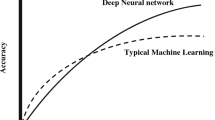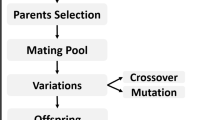Abstract
The proposed neural equalizer structure is based on a novel orthogonal basis function (OBF) expansion technique, motivated by genetic evolutionary concept, which utilizes a self-breeding approach to evolve new information to consolidate the final output. Here, the decision at a feedforward neural network (FNN) node termed as expert opinion of a generation undergoes an orthogonal expansion in two dimensions, where one of the outputs possessing the knowledge base for that generation participates in taking the final decision. Hence, a collective judgment based on the expert opinions evolved from decisions of individual generations gives a more rational and heuristic solution compared to a conventional feedforward neural network (CFNN) structure. Propagation of output error backwards and calculation of local gradients at each node become a difficult task as the OBF block is positioned in between the neurons of different layers. In order to circumvent such situation, a new technique has been evolved. The developed equalizer structure using this concept has outperformed the CFNN equalizer with wide margins. Further their bit-error-rate performances are close to that of Bayesian equalizer, which is optimal in the theoretic sense. Application of this proposed technique also reduces the structural and computational complexity of conventional neural equalizers. Hence, this efficient equalizer structures suitable for digital communication channels have the potential for real-time implementation in DSP, FPGA processors also.









Similar content being viewed by others
References
Chen S, Gibson GJ, Cowan CFN (1990) Adaptive channel equalisation using a polynomial perceptron structure. IEE Proc-I Commun Speech Vision 137(5):257–264, October
Siu S, Gibson GJ, Cowan CFN (1990) Decision feedback equalisation using neural network structures and performance comparison with standard architecture. Proc-I IEE 137(4):221–225, August
Chen CN, Chen KH, Chiueh TD (2003) Algorithm and architecture design for a low complexity adaptive equaliser. IEEE Int Symp Circuits Syst ISCAS’03 2:304–307, May
Yuan Y, Ihalainen T, Alhava J, Renfors M (2003) DSP implementation of low-complexity equaliser for multicarrier systems. Seventh Int Symp Signal Process Appl 2:271–274, 1–4 July
Haykin S (1994) Neural networks—a comprehensive foundation. Macmillan, New York
Lambotharan S, Chambers JA (1998) A new blind equalisation structure for deep-null communication channels. IEEE Trans Circuits Syst-II Analog Digital Signal Process 45(1):108–114
Chen R Jr, Wu W-R (2004) Adaptive asymptotic bayesian equalization using a signal space partitioning technique. IEEE Trans Signal Process 52:1376–1386
Wang LX, Mendel JM (1993) Fuzzy adaptive filters, with application to non-linear channel equalisation. IEEE Trans Fuzzy Syst 1(3):161–170
Chen S, Mulgrew B, Hanzo L (2003) Least bit error rate adaptive nonlinear equalisers for binary signalling. IEE Proc Commun 150(1):29–36, February
Lambotharan S, Chambers JA (1998) A new blind equalisation structure for deep-null communication channels. IEEE Trans Circuits Syst-II Analog Digital Signal Process 45(1):108–114
Author information
Authors and Affiliations
Corresponding author
Rights and permissions
About this article
Cite this article
Das, S. A novel concept of embedding orthogonal basis function expansion block in a neural equalizer structure for digital communication channel. Neural Comput & Applic 21, 481–488 (2012). https://doi.org/10.1007/s00521-010-0464-7
Received:
Accepted:
Published:
Issue Date:
DOI: https://doi.org/10.1007/s00521-010-0464-7




